Would you like to know the crystal structure of your active ingredient? Do you see the need of having the molecular structure confirmed? Do you want to be able to understand physicochemical properties of your Active Ingredient? Growing X-ray quality crystals with the CrystalBreeder would help you to answer these questions.
The CrystalBreeder will help you setting up crystallization experiments in parallel using different conditions and maximize your chance of success in a relatively short time. Here are few general conditions/factors need to be considered when designing your experiments.
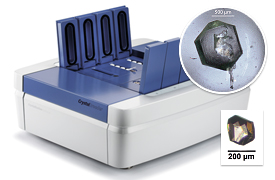
The CrystalBreeder instrument
Tips & Tricks for Growing Single Crystals
Solvents
Highly volatile or long chain solvents should be in principle avoided. The presence of benzene-like solvents can in many cases help.
Solubility
Choose a solvent in which your compound has moderate solubility. If the solute is too soluble, this will result in small crystal size. Avoid solvents in which your compound forms supersaturated solutions. Supersaturated solutions tend to give crystals which are too small in size. The CrystalBreeder can help you determine the solubility profile of your compound in a relatively short time by using a relatively large number of chemically different solvents.
Nucleation
Too many nucleation sites will implicitly lower the crystal size, and therefore working with clean glassware is important. The CrystalBreeder uses 0.3 mL glass vials which can be easily purchased at low costs from many providers around the world.
Glassware
The 0.3 mL glass vials of the CrystalBreeder have the same dimensions and unique properties as standard NMR tubes which are commonly used by the experts for single crystal growth due to round bottom of the vial.
Disruption free environment
Not disturbing the crystallization experiments is highly important. Due to its robust design, the CrystalBreeder instrument helps you perform the experiments in a disruption free environment. One can forget about the experiments and return two weeks later to collect the results.
Computation guided experimentation
New polymorphs and even more stable forms may emerged in an experimental search for solid forms, when the experimental approach is guided by the computational methods, such as crystal structure prediction and lattice energy modeling. The CrystalBreeder can help you to validate those computational models.
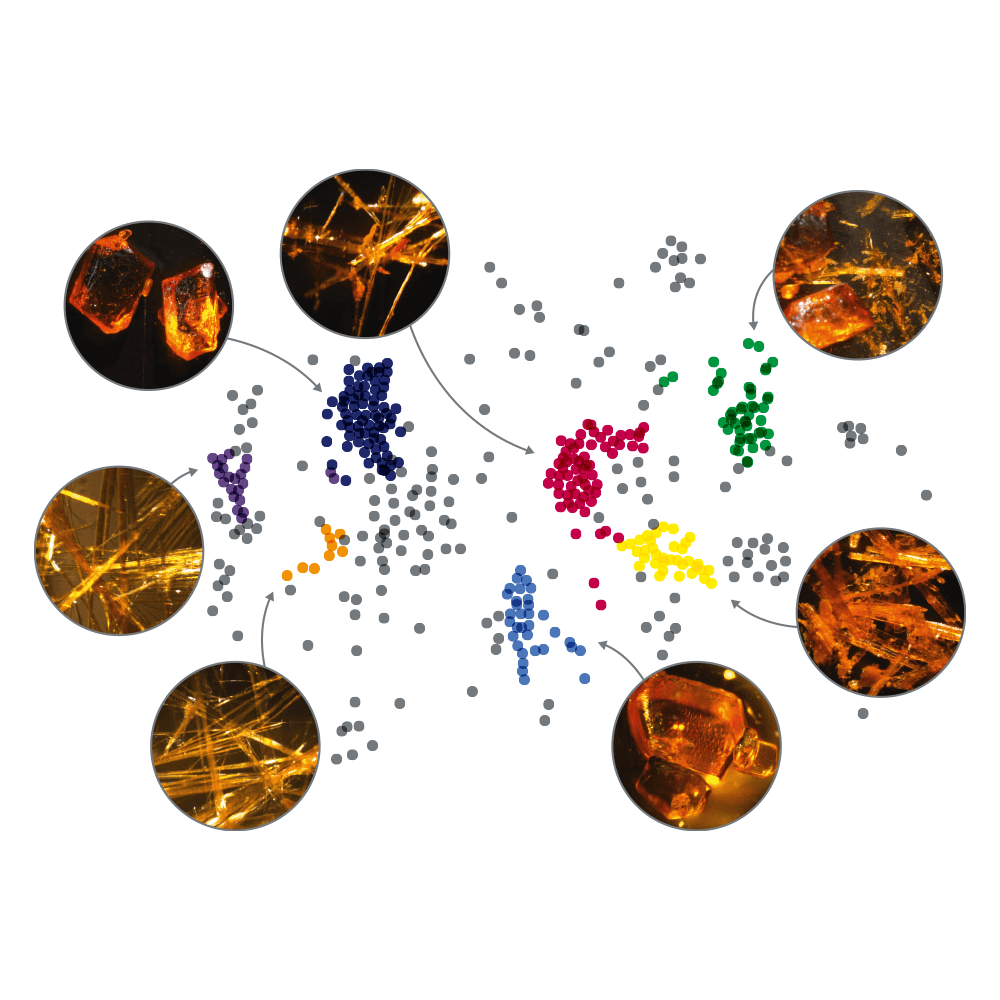
Case Study - Thermal crystallization for growing single crystal with the CrystalBreeder
Crystal of carbamazepine (CBZ) and p-aminobenzoic acid were grown by thermal crystallization with the CrystalBreeder. Prior to the design of experiments, the solubility of carbamazepine was determined in a few solvents. For every solvent, four different concentrations were chosen. The lowest concentration was at about 75% of the solubility at room temperature (RT) and the other three concentrations were from 100% to 150/200% of the RT solubility. Each sample was heated according the temperature profile presented hereafter.
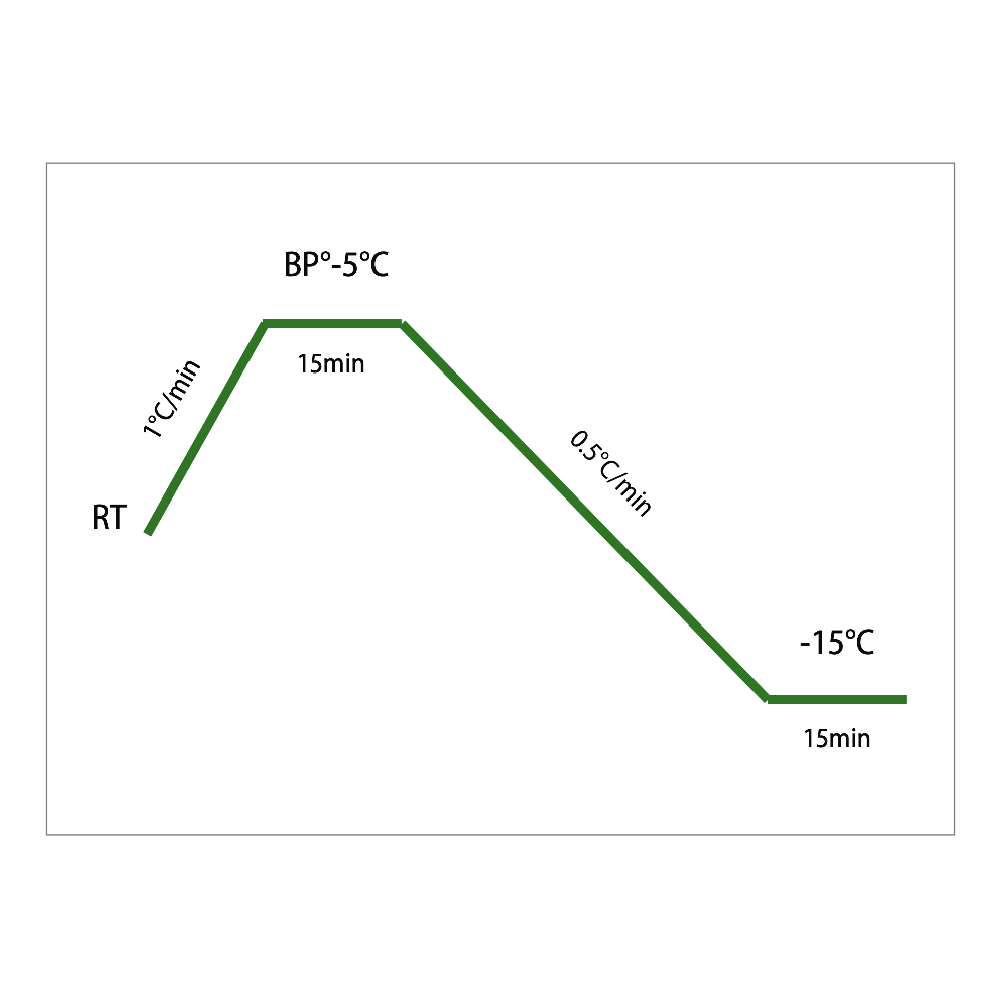
Excellent quality crystals were obtained for two forms of carbamazepine. The anhydrate of carbamazepine (CBZ) crystallizes as thin needles (monoclinc P21/n). The hydrated form of carbamazepine (CBZ·0.25H2O) crystallizes as prismatic crystals (trigonal R-3).
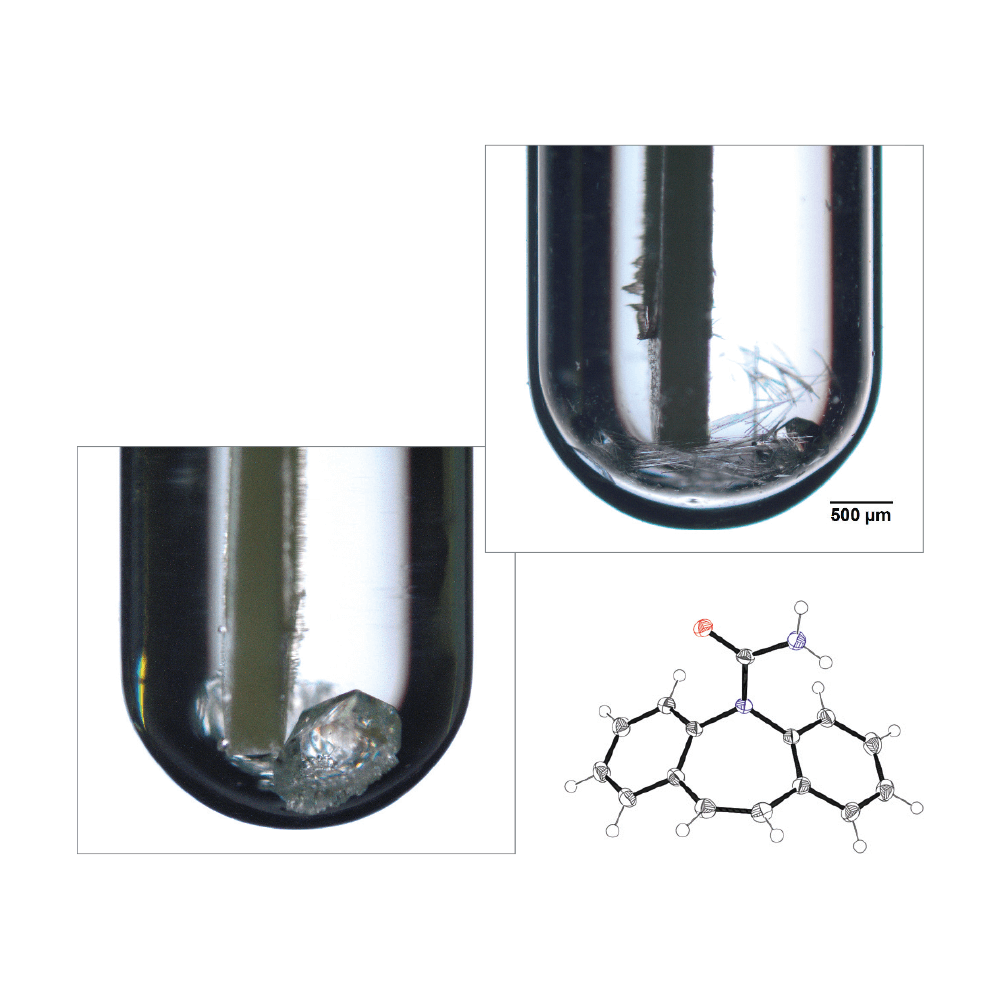
The p‐aminobenzoic acid crystals were also grown with the same method which was used for the CBZ. The best results for p-aminobenzoic acid were obtained in ethyl acetate. P‐aminobenzoic acid crystals showed to have a monoclinic symmetry crystallizing in P21/n space group.
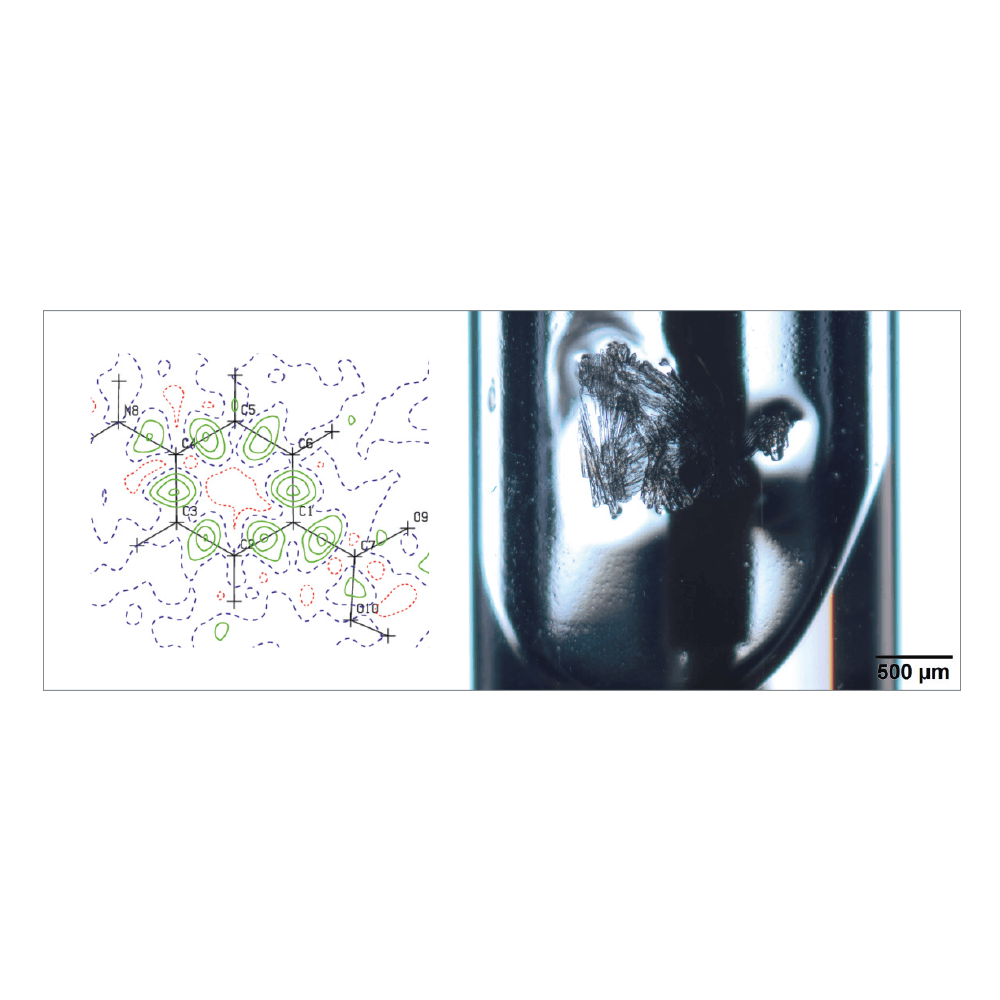
Technobis Crystallization Systems is grateful to Prof Dr Bernhard Spingler and Philippp Nievergelt from Zurich University, Switzerland for the help with this case study.
References: P.P. Nievergelt & B. Spingler, CrystEngComm, 2017, 19, 142.
Case Study - Sublimation for growing single crystal with the CrystalBreeder
Single crystals of diphenic acid were grown by sublimation. Approx. 1 mg of the compound was transferred into a CrystalBreeder vial and heated in the CrystalBreeder to 150°C. Vapour deposition of diphenic acid in the form of single crystals occurred within few hours, resulting in crystals suitable for single crystal structure determination. By applying vacuum (150 mbar) the process was not only accelerated, but also better quality crystals were obtained. Similarly, sublimation experiments using the CrystalBreeder lead to single crystals of salicylamide and salicylic acid.
References: Technobis Crystallization Systems is grateful to Dr Doris Braun from Innsbruck University, Austria, for the help with this case study.
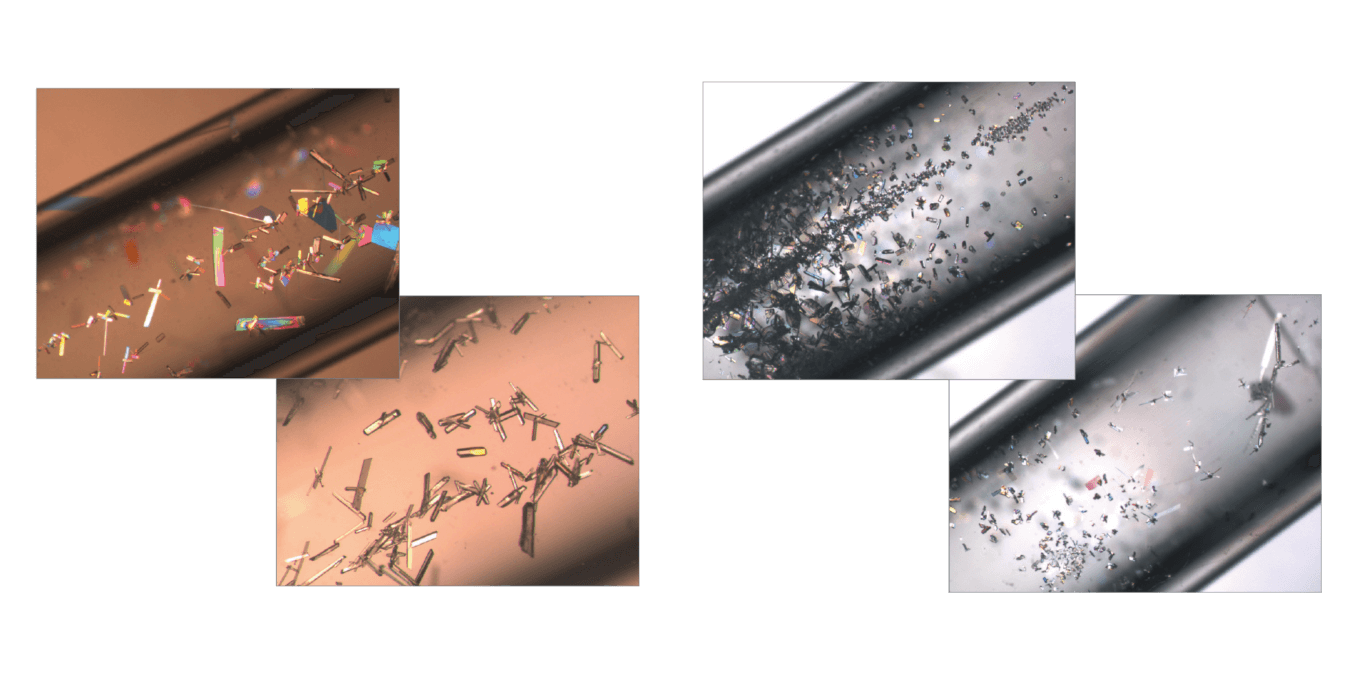
Conclusions
In order to grow single crystals by thermal crystallization, it is essential to exactly know the solubility in the chosen solvents at the wanted temperature. Excellent quality single crystals of carbamazepine and p‐aminobenzoic acid were grown within only six hours with the aid of the CrystalBreeder instrument by using as little as 1.5 mg of material. Good X-ray quality crystals were grown in the CrystalBreeder by a combination of sublimation and vacuum. The crystallization process is not only accelerated by applying vacuum, but quality of crystals is also improved.
Curious to learn more?
Download the application note "Growing X-ray Quality Single Crystals"